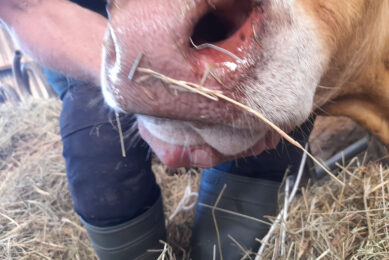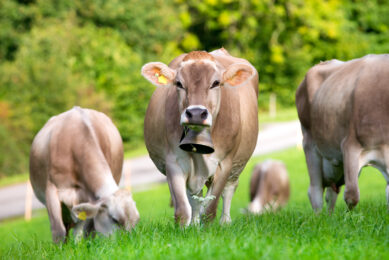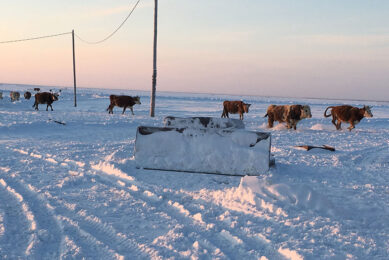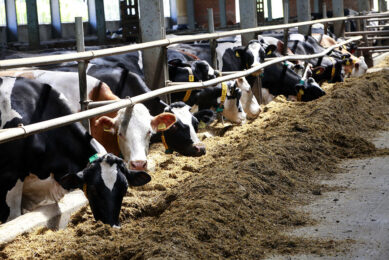Health: First things first
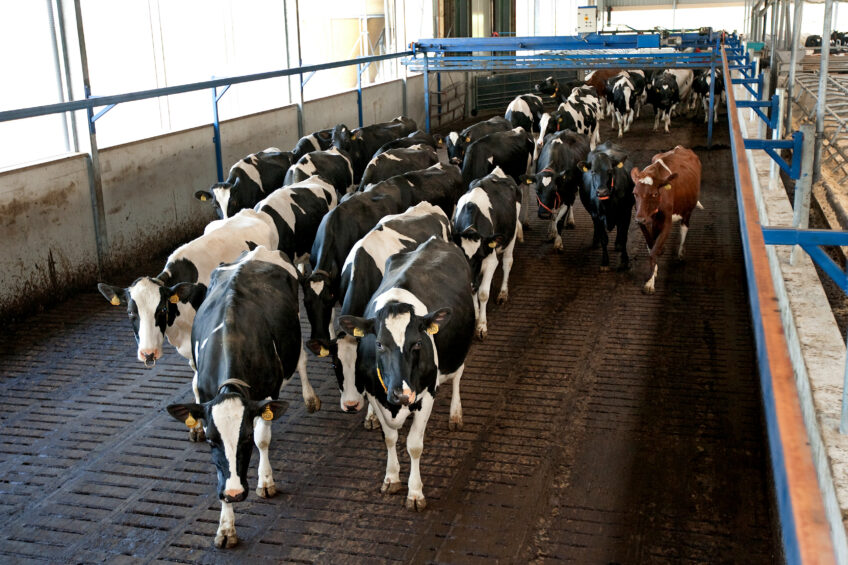
On average, it is harder to keep animal diseases under control on large-scale dairy farms. A systematic approach is therefore needed to improve the health status. With a few simple measures, big steps can be made.
It’s a fact that, on large farms pathogens spread faster, this is due to the large number of animals and thus more contact between the cows. Furthermore, infections are harder to get rid of, compared to smaller farms. This is why large companies should invest in achieving a high health status. Having a large dairy also has advantages. Often, these farmers have more money to invest in control measures and are able to work with or hire trained staff. “The farm size forces these farmers to work methodically and that fits in well with increasing the health status at the farm,” explains Bertjan Westerlaan, a Dutch veterinarian at the veterinary consultancy company Vetvice. Increasing the health status begins with awareness. Furthermore, staff should be properly trained and motivated to be part of the health improvement plan. In this article we explain further how to step up animal health by focusing on measures for external biosecurity, internal biosecurity and the immunity of the animal. There are a number of efforts that have a direct effect, which are mentioned first here.

External biosecurity
The 1st barrier that a pathogen encounters is at the farm gate. Pathogens enter via animals, humans, feed, manure, air and pests. The import of animals is the most important way that pathogens enter the barns. So it is recommended to buy as little as possible. And when animal need to enter the farm, make sure you know where they come from and what their health status is. This can be found out via blood testing. In an ideal situation, farms have a quarantine unit where the new animals can stay for a few weeks until the blood tests showed that they are free of diseases. In the dairy industry, this is not a common thing to do, but certainly worth considering, says Mr Westerlaan. The dairy farmer can improve the external biosecurity in different ways:
• Always make sure that visitors wear work clothes, provided by the farm. Also let visitors work with materials that are already present at the farm. Set up a changing room at a logical location on the farm, stocked with sufficient clean clothing in a variety of sizes.
• When cows and calves are gathered in a special delivering unit or a calf igloo respectively. This way, the animal truck that picks them up keeps enough distance from the barns. The cattle remains as far away from the stables and animals. The same goes for picking up the carcasses.
• Avoid that animals from a neighbouring farm touch each other (which is sometimes the case when paddocks are divided by only a wire). Make agreements with your neighbours about this and if needed, add another wire. Do not let young cattle graze on fields that have just been fertilised with animal manure.
• Have separate clean and dirty working area, as much as possible. Prevent that transport lines of manure and feed cross each other. Manure is a carrier for, Salmonella and para-TB amongst others.
• Keep pests outside the stable. Fight acute fly infestations at the source (the place where they lay eggs). That is, in particular, in the manure pit, or near the outdoor (manure) storage. A contract with a pest controller (that comes at regular times during the year for example) gives structure for the farmer and can prevent serious fly problems.
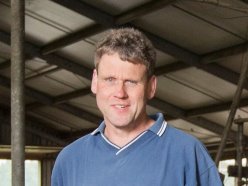
“Investments pay for themselves”
It is impossible to enter the dairy farm of Martin de Boer (50) in the town Makkinga, the Netherlands unforeseen. A large fence prevents visitors driving up to the farm. First, everyone has to go through the hygienic sluice. Mr de Boer, owner of 190 dairy cows and 150 calves (grazed on 95 hectares), has integrated health management in the total farm management. “We have been doing that for years. It requires investment, but it pays for itself. “To prevent diseases entering the farm, a strict division has been made between the clean and dirty business area. To optimise the logistics, even a second driveway has been built. Transportation routes of manure and feed do not cross each other and the buyer of the calves and cows never enters the farm. Mr de Boer also has cleaning areas for the visitor’s boots, after walking on the slatted floors. The cattle have the highest ‘disease-free’ status for diseases like BVD, IBR and para-TB. The farmer sees most investments as a matter of trying to work as consistent as possible, rather than just seeing it as high costs. Although he finds the money spent on the (voluntary) health programmes relatively high. “I can imagine that some people find it too expensive, especially when milk prices are low.” Working on health costs money but the end result can be positive. “We have sold quite a few young cattle in the past, and with having a high health status we can ask up to € 200 per animal more.” Mr de Boer also notices a drop in antibiotic use and less labour (1 sick cow can take up more time than 100 healthy animals).” The farmer is never finished and his next plan is to invest in the housing. “But first the milk prices have to rise.”
Internal biosecurity
The 2nd barrier is formed in the shed by preventing the spread of pathogens from animal to animal. Treat sick animals on time and have proper isolation of sick animals. The calves must be housed separately from the cows. The lowest risk of disease transmission can be achieved by housing calves up to a year in a separate young stock barn. In the most ideal situation calves remain in the same group during the entire rearing period. This is beneficial for limiting disease transmission, monitoring and social order (hierarchy) in the group. When the calves have to be moved to another location, it is preferred to move the whole group in one go. The all in all out system makes it easier for the farmer to clean and disinfect. A recommended group size is 6 to 8 calves. More measures that can help in improving the internal biosecurity are:
• Put on a new set of clothes when entering the young stock area.
• Keep calves of the same age together and always start working with the youngest calves.
• Create a separate hospital unit to treat sick animals. Label sick calves and pens that house one or more sick animals. Use separate equipment and take care of these sick animals at the end of the routine. It is recommended to also create a separate group of cows that have udder infections.
• Do not provide cow milk to the calves, except colostrum from their own mother. The risk of transmission of Para-TB via cow milk is a known fact, but also other diseases can be transmitted. Furthermore, milk is a breeding ground for bacteria, thus increasing the risk of calf diarrhoea when this milk is fed to the young cattle.
• Avoid contact with dogs. Dogs can become infected through (for example) contaminated amniotic fluid from the cows.
• Don’t let cows and calves drink water from pipes that are connected with each other. Replace a system with low pressure for a system with high pressure.

Immunity level of the animal
The 3rd barrier that bacteria and viruses have to get through is the cow itself. A high immunity makes sure that the calves and cows are better protected when there are pathogens around, suffer less from an infection or recover sooner. Moreover, animals with a good immune system are less infectious to other animals. To step up immunity depends on many factors, such as diet, environment, housing and overall management. This is common knowledge for most farmers, but not all these factors get enough attention. A maximum immunity starts with the newborn calf. Make sure the calving is done in a clean area and avoid contamination with manure. When temperatures are low, make sure the calves are placed in a dry, warm area, where there is no draft. Supply colostrum as soon as possible after birth and aim to have at least 2 litres of colostrum in, and repeat this after 12 hours. Other actions to work on a better immunity include:
• Check with your veterinarian on possibility of vaccinations. Make it part of the overall animal health plan.
• Prevent overcrowding in the stable, in both the cows and the young stock area. Too many animals can creates stress, which reduced the immunity. Stress also increases dirt in the barn and has a negative effect on the internal climate regulation. Also think of ways to optimise cow comfort.
• Provide a good resting area for the animals. Mr Westerlaan has observed less udder and claw problems when the resting areas are covered with sand.
• Nutrition and attention are very important throughout the whole production period, but try to focus more on the transition period and the dry period.
• Create a good internal environment with good ventilation (dry stable) and prevent heat and cold stress. Heat stress can begin at 17 °Celsius and with a high air humidity. Cold stress is relevant to young calves up to five to six months. The younger they are, the more sensitive.
A roadmap can help in achieving the goals
1. Divide animal health into sub-areas that need attention and each sub-area can be further specified. This is already part of the mandatory health plan in the Netherlands for example.
2. Measure the current situation, meaning the status of the sub-areas. Think of parameters such as number of sick animals per month or the test results from the bulk milk tank. Rate facilities and processes, for example colostrum intake of calves in the automatic feeder.
3. Prioritise and make a schedule. This includes the need to take certain measures, personal affinity with certain measures and the required investments (including time, money and renovations needed, versus the forecasted benefits).
4. Convert the outcome of the previous step into annual plans. If possible, turn these into sub-projects, each having a set of goals, make someone responsible and set clear deadlines to achieve the goals.
5. Monitor the execution and the results of the plan with own staff and external experts.
Join 13,000+ subscribers
Subscribe to our newsletter to stay updated about all the need-to-know content in the dairy sector, two times a week.



